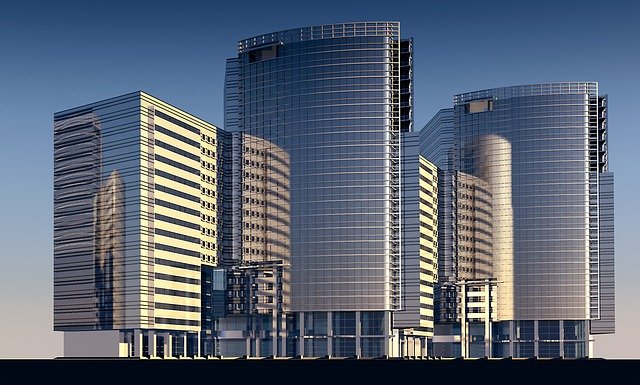At the start of any project, many AEC professionals face the same issues. That’s when they’ll need to collect all of the information they’ll need on the upcoming building site. Before any construction paperwork can be set up, a topographic study is essential if we are talking about creating anything from the ground up. In the event of renovations, an architect will want exact as-built data on the present state of an existing structure.
Typically, such information is acquired manually by the building crew. This necessitates several visits to the site and is, as one would expect, time-consuming and tiresome. Furthermore, the information gathered in this manner is often partial or erroneous. This, of course, implies missing deadlines and squandering much more of the client’s funds than is necessary.
Point cloud modeling is one tool that may aid in this situation. It is the process of transforming a point cloud, which is a collection of data points in three dimensions, into three-dimensional models and two-dimensional construction documents. The benefit of point cloud technology is that it provides very accurate 3D pictures that are light in weight according to Atis Cloud, one of the top point cloud viewers on the market. The first data collection method is simple, and it generally involves scanning the place with a laser or photographing it with a camera mounted on a drone. In this manner, the whole process may be completed in hours rather than days.
The next procedures may be delegated to a business that specializes in point cloud modeling. And this paper explains precisely what advantages AEC professionals may get from such collaboration. So, let’s see what happens.
Point Cloud Modeling Can Be Used to Create a Virtual Reality/Augmented Reality Experience
Finally, point cloud scans are ideal for VR and AR because they can capture all of the materials in great detail while still being considerably smaller than a 3D model. Before a point cloud can be seen as a VR tour or an AR picture, just a few tweaks must be made with the help of expert software. In comparison to normal 3D models, this implies less effort is spent preparing visual assets.
It also addresses the issue of most electronic gadgets’ lack of computer capacity. Especially in the case of augmented reality, when consumers just use their phones or tablets to examine 3D representations. Needless to say, such an example will get any architect a bonus point during a project presentation. Depending on the customer, it might even be a deciding factor.
The Full Picture of a Construction Site is Captured by Point Cloud Data
The use of point cloud modeling allows for a thorough examination of the site prior to the start of construction. When creating an entity from the ground up, topography data determines whether the original project concept can be implemented at the selected location. After that, an architect may complete the design and, if required, make revisions. The structure and condition of the ground also influence what pre-construction work is necessary and how the future building’s foundation will be placed. Finally, point cloud modeling entails dealing with ultra-precise data, allowing for the verification of compliance with zoning rules and regulations.
A point cloud is a collection of built data that can be converted to BIM.
In the case of renovation, point cloud technology allows for a complete capture of the existing condition of a structure. The initial stage in most rehabilitation projects is to generate a Building Information Model that represents the current building geometry, which is done using point cloud modeling. AEC experts will get a highly accurate, intelligent 3D model to employ in the project.
What makes it so crucial? Because of the precision that BIM delivers, the whole building process runs smoothly. Furthermore, every modification to any aspect of the model is instantly reflected in all views, keeping all construction teams informed and eliminating the possibility of errors. This, in turn, aids in meeting deadlines and staying under budget. Overall, BIM considerably enhances project coordination, which is why it is now extensively employed in the majority of industrialized nations. In fact, for large-scale and/or state-funded architectural projects, several of them even require the usage of BIM.
The Data from the Point Cloud is Ready for CAD Authoring
Point cloud data is also utilized to write editable 2D drawings — architectural CAD – in addition to making 3D models. Dimension plans, dismantling/mounting layouts, utility systems designs, wall elevations, and even furniture layouts are examples of these. To put it another way, CAD materials include critical information for building and remodeling. They are straightforward, dependable, and well-known among AEC experts. They’re also quite handy since they may be seen on smart devices or printed.
Damaged details may be reconstructed using point cloud modeling.
It is not just necessary to create full-scale 3D representations of whole structures. When it comes to renovations, certain external and interior design features might be important. This is particularly true when dealing with historical sites when the owner seeks to restore and preserve something that has been harmed through time. Columns, steps, fireplaces, and even statues, for example, may all be taken care of.
They are first digitally recreated as 3D models using data from the location by a point cloud modeling professional. If some of the components are too damaged, the expert might turn to other sources, such as images of comparable artifacts. The ready 3D model will next assist in the reconstruction of the damaged pieces in real life.
With all of this stated, point cloud modeling is clearly a highly beneficial technique for AEC professionals. Naturally, the more we can automate procedures in design, engineering, and construction, the less likely we are to make expensive errors. Reality capture makes it possible to gather data about a prospective building site more quickly and easily than ever before. It also ensures that there will be no need to return to the spot to retake the measurements even once. Because point clouds are the most accurate depictions of reality. As a consequence, AEC professionals are able to complete projects on time and on budget.




